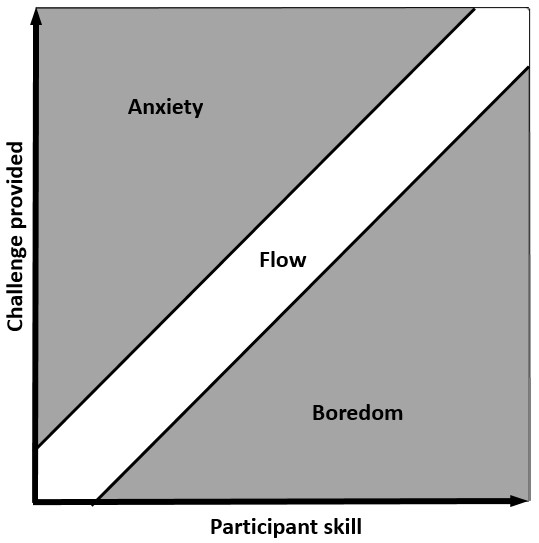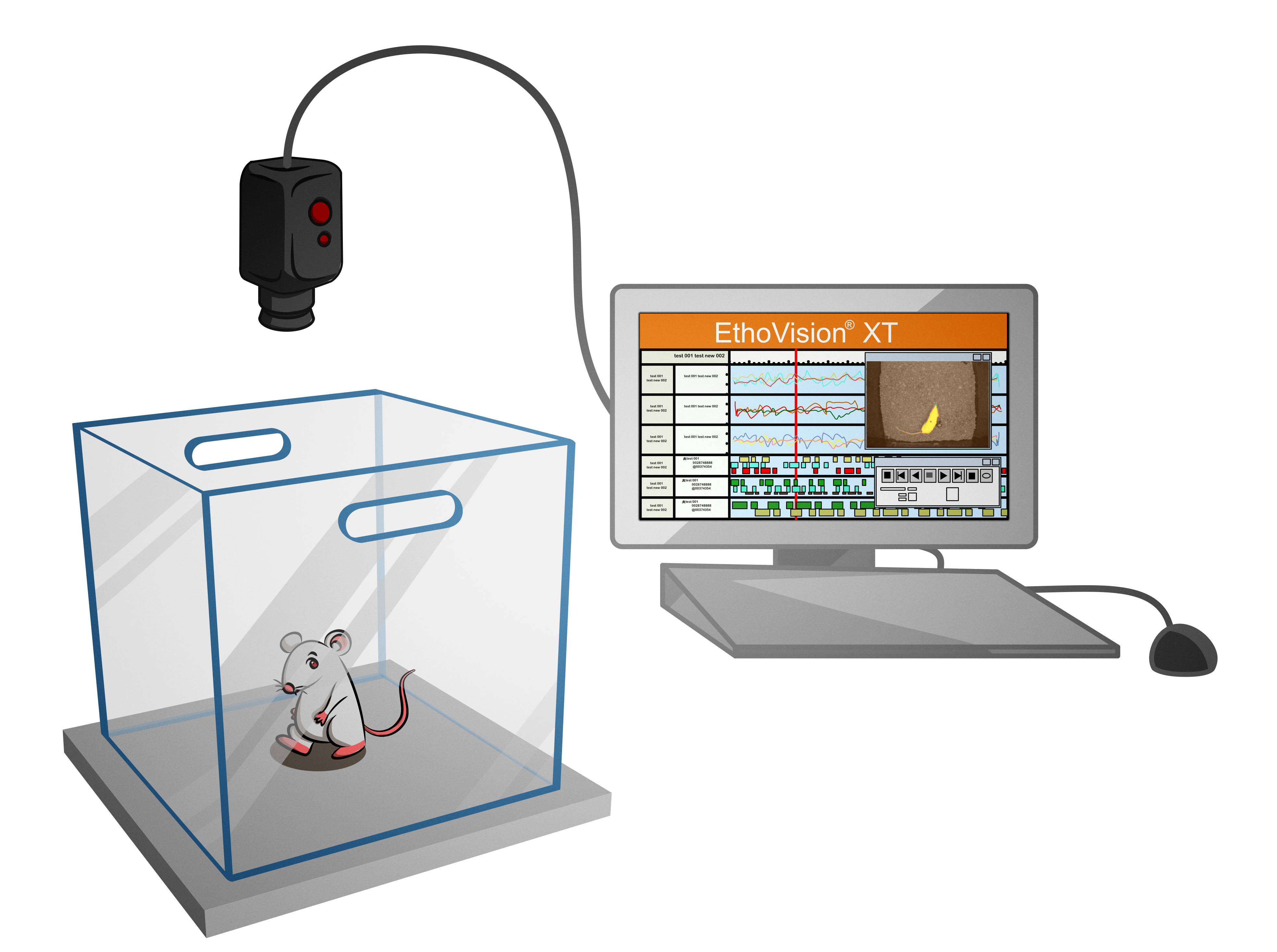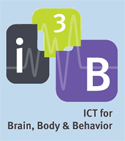By Martijn van den Berg
Flow is a state in which a person is fully involved in an activity, decreasing self-consciousness and sense of time. This process requires a person to be extremely focused, as well as exactly have the skills to master a task. Achieving flow is desirable, because during flow a person can reach maximum skill level as well as creativity within a domain[1]. However, measuring when a person is in flow and subsequently finding out how to get a person in a flow state is difficult, because flow causes persons to decrease self-consciousness, not recalling to what extent flow occurred[2].
Read More
Topics:
FaceReader,
facial expression analysis,
emotions,
flow
We recently teamed up with a new partner, Maze Engineers, to extend our portfolio of video tracking solutions. They also have a great blog, and today we would like to share one of their recent posts with you. Find the original article here and their blog here. Thanks, Maze Engineers, for letting us share this post with our readers!
Read More
Topics:
EthoVision XT,
Video tracking,
open field test,
elevated plus maze,
Maze Engineers
Introducing muCap
By David Schindler
David Schindler is the laboratory manager of the interdisciplinary decision making laboratory MELESSA at the University of Munich, currently visiting the University of Pennsylvania.
Many researchers interested in human behavior have used Noldus FaceReader in the past to determine emotional states of their subjects. By now, it has become somewhat of a standard to analyze emotions in small-scale psychological studies, to gain insights into consumer behavior from a marketing perspective and in many more areas.
Read More
Topics:
emotion recognition,
FaceReader,
facial expression analysis,
emotions,
psychology,
economics
As I mentioned a couple of weeks ago, at this year's Neuroscience I talked to someone from the Gerlai Lab at the University of Toronto (Ontario) who is involved in very interesting research on alcohol addiction. That person was Steven Tran, and I am very happy to say that he agreed to share a story on our Behavioral Research Blog. Take it away, Steven!
Read More
Topics:
EthoVision XT,
Video tracking,
zebrafish,
anxiety research,
addiction
This week we have a guest blog post from Prof. Richard Baines. His lab investigates how the electrical development of neurons is regulated. His research was long based on the larvae of fruitfly, but the lab recently started using zebrafish larvae. He kindly agreed to share his insights on our blog.
Read More
Topics:
EthoVision XT,
zebrafish,
Danio rerio,
DanioVision
Characterizing postoperative cognitive dysfunction with a novel rat-model.
This week we have a guest post by Iris Hovens. She has done some really interesting research into the consequences of surgery in terms of reduced memory and concentration problems. This is especially a concern for elderly people. We are very happy that Iris has so kindly agreed to write about her research on our blog. At the end of this post, you will also find a link to a free white paper about this research! Thank you, Iris!
In the Netherlands, yearly more than 400.000 patients aged over 60 undergo surgery. Although the surgeries are aimed at improving health and well-being, ten percent of these older surgery patients will develop dementia-like symptoms, such as reduced memory and concentration and problems with planning and information processing. This postoperative cognitive dysfunction (POCD) seriously affects the life of patients and their near friends and relatives, as it is associated with a reduced quality of life, increased dependency on social care and an increased risk of lasting mental and functional disability.
Read More
Topics:
EthoVision XT,
Video tracking,
learning and memory,
open field test,
novel object test,
dementia
Today, we are proud to have another guest blogger! Laura Webb has done some interesting research at Wageningen University (The Netherlands) on the dietary preferences of calves and honored us with a blog post! Also, there is a free case study available at the end of this post!
Calves, whether raised for milk or meat production, are typically fed diets that differ from diets of feral cattle herds. For example, veal calves receive large quantities of milk replacer and solid feed with little structure to chew on, while dairy calves are weaned off milk early on and receive mostly solid feed. Diets typically fed to calves can cause a number of welfare problems, including poor stomach health as well as stress due to the inability to perform highly-motivated natural behaviours such as rumination or sucking on a teat. Furthermore, there is much research indicating that animals, and in particular ruminants, are able to select a balanced diet and maximise their comfort. So why not let calves choose?
Read More
Topics:
The Observer XT,
video observation,
Cows,
Pocket Observer,
feeding behavior,,
stereotypies
Over a period of 30 months, Peter Lewinski, Research Fellow at the University of Amsterdam and VicarVision B.V., carried out 12 experiments with an automated facial expression coding software called FaceReader Online. This new neuromarketing technology helped him to test more than 1200 facial emotional reactions to dozens of famous advertisements. The experiments yielded 1 million frames that provided more than 10 million data points to analyze on variables such as emotions of happiness, sadness, anger, surprise, fear, disgust, contempt or valence, arousal, and attention.
Read More
Topics:
emotion recognition,
FaceReader,
facial expression analysis,
emotions
A guest blog p
ost by Jeroen MG Stevens & Katherine A Cronin
Bonobos (Pan paniscus) are the least well known of the great apes, discovered only in 1929. Often they are contrasted with their closest relatives: the chimpanzees. In a common dichotomous view, chimpanzees are portrayed as brutal, aggressive, and demonic, while bonobos are portrayed as nice, peaceful, and hedonistic.
Read More
Topics:
The Observer XT,
social behavior research,
apes
A guest blogpost by Ding Yuan Oh, PhD
Conventional ferret activity measurements by human observation
Ferrets are the ideal animal model to assess influenza virus infection and pathogenicity as they display similar clinical symptoms to humans such as sneezing, fever and lethargy. Conventionally, lethargy or ferret activity is determined manually by an observer. However, this method is prone to bias and requires trained personnel to recognise subtle changes in individual ferret activity.
Read More
Topics:
EthoVision XT,
Video tracking,
activity monitoring,
ferrets
















